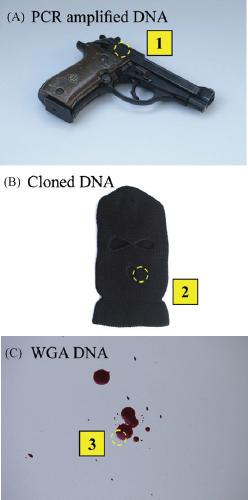This is what Dr. Dan Frumkin, one of the founders of Nucleix, says in an interview with the Hidan website. "We must protect against this possibility, even if not every petty criminal knows how to do it. Not every criminal also knows how to counterfeit money, but those who know cause a lot of damage"

A few months ago, two journalists came from The New Scientist, and showed how easy it is to steal a person's genetic identity.
One of them drank from a glass, his friend took the glass and sent it to a company that extracts DNA for a fee without asking the reason for the request. The two received a small amount of DNA back in the mail, which they sent to a company that duplicates DNA for a fee. They sent the cloned DNA to a third company that did a genetic analysis.
What they have proven, says Dr. Dan Frumkin, one of the founders of Nucleix, in an interview with the science website, is that any person who has access to the Internet and money can hack the genetic code of any person who wants to. "We showed a similar process, although not in the context of identity for espionage as these two requested, but in the context of forging DNA and planting it at a crime scene." As you may recall, yesterday it was announced in the media that the Israeli Nucleix had developed a kit For detecting fake DNA at crime scenes.
"We live in a world where, in the end, everything that is easy to fake has someone who fakes it. Think of the amount of thought and measures people put into maintaining security so they can't hack into bank information or forge documents, the government puts effort into making sure they can't forge bank notes thinking someone might do it.
"How many people can forge bank notes? It doesn't matter, because whoever does it does enormous damage. All the more so - DNA, whose falsification is much easier than other things and whose implications are much heavier at crime scenes. It's time to secure this factor and check that DNA found at crime scenes is indeed real and not fake."
The company's story is interesting, it all started when Frumkin and Dr. Adam Wasserström finished their doctorates at the Weizmann Institute. Frumkin explains: "We did completely different things there than we do today, but we both routinely used, like many other doctoral students, DNA replication using different methods. When we finished the doctorate and started acting independently, we had the thought of getting out of the box and instead of continuing in the fields of one of us and developing it, we sorted out all the actions we performed and thought about their consequences. Among other things, we suddenly thought about DNA replication. We knew that the police use a certain nucleotide sequence from the DNA that differs from person to person to identify a DNA sample. We asked if it is really possible that the genetic profile produced from replicated DNA will be the same as that produced from real DNA? And that's how the project started, we also created a collaboration with Arnon Grafit, the fourth writer working in the police's forensics department. We asked him if the police are even aware of the possibility that there could be a duplicate DNA sample at the scene, it turns out that such a possibility is not taken into account, we realized that we have something to check."
"We knew the answer to the question very quickly in the laboratory, then we spent a little more than the last year actually developing the solution." Dr. Fromkin explains and adds: "The solution is based on the fact that unlike the identical nucleotide sequence between real and replicated DNA, the other biochemical properties are not the same. Natural DNA is one type of DNA, while artificial DNA can be one of several types, depending on the method of its production. An example of such a difference could be the type of methylation - a chemical modification that is not related to the DNA sequence itself, and which will differ between the different types of artificial DNA and of course from the real DNA.
What were the reactions among the experts in the forensic field?
"This article was published online, not yet in the printed edition about three weeks ago, it takes time for the scientific system to respond, but we actually received an indirect response by being accepted to deliver a lecture at the most important conference in the field, the 20th Personal Identification Conference to be held in October in Las Vegas.
And when will you have a product that the police can use on a regular basis?
"What was published in this article is the first generation of the technology, the second generation will be much more applicable, the ambition is to develop a test technology that will be fully compatible with the existing system of forensic tests. We will also present these developments at the conference in October. At the same time, we continue to develop the technology and conduct contacts with the Israel Police to carry out validations (validation) for our systems on real samples from them."
By the way, as proof of the inaccuracy of the criticism's words, as if the company warns about the problem only when it has a solution, Fromkin directs us to the website of Prof. George Church from Harvard - The Personal Genome Project, where he appeals to the general public to send him DNA samples for the purpose of research and experimentation to locate genetic diseases, and to study hereditary phenomena, but also warns against some dangers involved in this step and in them, The possibility of using the information by criminals.

One response
What a drag